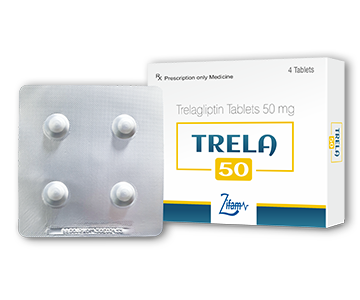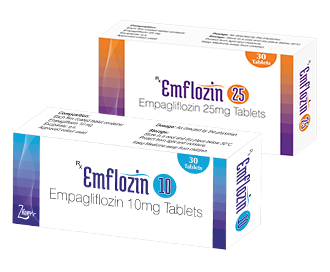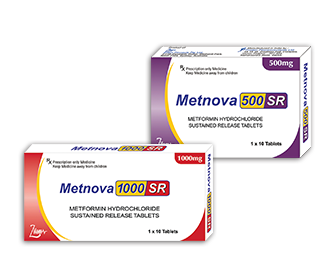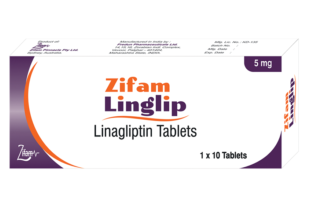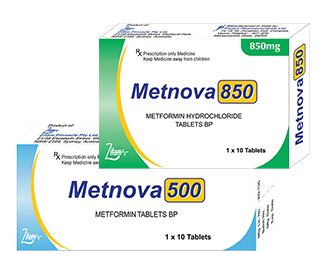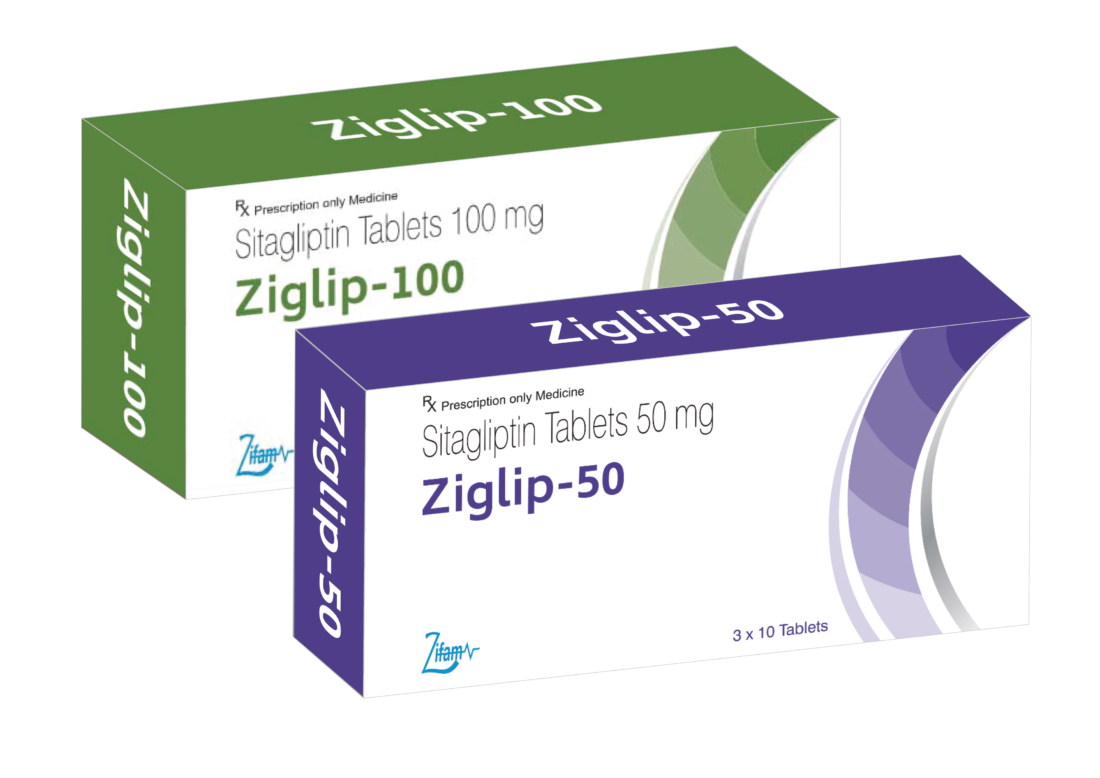Dibor R
- ENG
- မြန်မာ
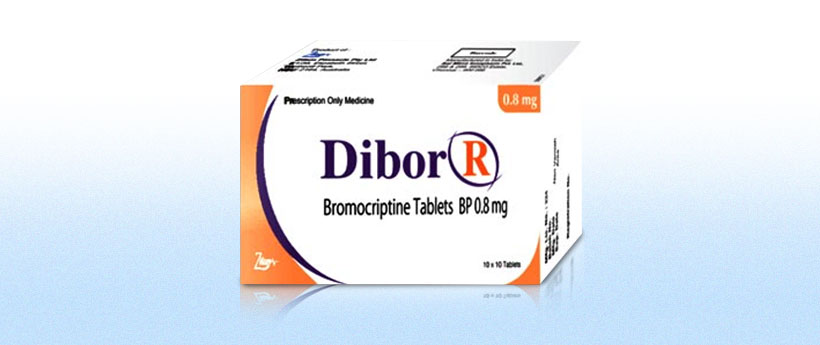
Each Uncoated Tablet Contains:
Bromocriptine Mesilate BP
equivalent to Bromocriptine……….0.8mg
Pharmacological Properties
Pharmacotherapeutic group: Type 2 Anti-diabetic drug
Mechanism of Action:
DIBOR R contains bromociptine mesilate, an ergot derivative that is a dopamine receptor against.
Once daily morning administration of Bromocriptine to humans increases circulating levels of bromocriptine, a dopamine receptor against, for 4-5 hours after administration.
Pharmacokinetic Properties:
Absorption:
When administered orally, approximately 65-95% of the Bromocriptine dose of bromocriptine mesilate is absorbed.
Distribution:
Bromocriptine is 90-96% bound to plasma proteins. The volume of distribution is approximately 61L.
Metabolism:
Bromocriptime mesilate is extensively metabolized in the gastrointestinal tract and liver. Metabolism by CYP3A4 is the major metabolic pathway. Most of the absorbed dose (approximately 93%) undergoes first-pass metabolism. The remaining 7% reaches the systemic circulation.
Elimination:
The major route of excretion of bromocriptine is in the bile with the remaining approximately 2-6% of an oral dose excreted via the urine. The elimination half-life is approximately 6 hours. Prior consumption of a standard high-fat meal has little to no effect on the elimination half-life of Bromocriptine.
THERAPEUTIC INDICATION:
Type 2 diabetes mellitus
DIBOR R is indicated as to improve glycemic control in adults with type 2 diabetes mellitus.
Important Limitations of Use
- DIBOR R should not be used to treat type 1 diabetes or diabetic ketoacidosis.
- Limited efficacy data in combination with thiazolidnediones
- Efficacy has not been confirmed in combination with insulin.
POSOLOGY AND METHOD OF ADMINISTRATION:
Recommended Dosing:
The recommended dose of DIBOR R is 1.6mg to 4.8mg administered once daily within two hours after waking in the morning. DIBOR R should be taken with food to potentially reduce gastrointestinal side effects such as nausea.
DIBOR R should be initiated at one tablet (0.8 mg) and increased by one tablet per week until a maximum daily dose of 6 tablets (4.8mg) or until the maximal tolerated number of tablets between 2 and 6 per day is reached.
CONTRAINDICATION:
DIBOR R is contraindication in
Patients with known hypersensitivity to bromocriptine, ergot-related drugs, or any of the excipients in DIBOR R.
Patients with syncopal migraine. Bromocriptine increases the likelihood of a hypotensive episode among patients with syncopal migraine. Loss of consciousness during a migarine may reflect dopamine receptor hypersensitivity. Bromocriptine DIBOR R is a dopamine receptor against, and may, therefore, potentiate the risk for syncope in these patients.
Women who are nursing their children. Bromocriptine may inhibit lactation.
SPECIAL WARNINGS AND PRECAUTIONS FOR USE:
Hypotension: Can use orthostatic hypotension and syncope, particularly upon initiation or dose escalation.
Psychosis: May exacerbate psychotic disorders or reduce the effectiveness of drugs that treat psychosis. Use in patients with severe psychotic disorders is not recommended.
Somnolence: May cause somnolence. Advise patients not to operate heavy machinery if symptoms of somnolence occur.
Interaction with dopamine antagonists: Concomitant use with dopamine antagnoists such as neuroleptic agents may diminish the effectiveness of both drugs. Concomitant use is not recommended.
Macrovascular outcomes: There have been no clinical studies establishing conclusive evidence of macrovascular risk reduction with Bromocriptine or any other antidiabetic drug. Bromocriptine does not increase the risk of macrovascular events.
INTERACTION WITH OTHER MEDICINAL PRODUCTS AND OTHER FORMS OF INTERACTIONS:
- May increase the unbound fraction of highly protein-bound therapies, altering their effectiveness and safety profiles.
- May increase ergot-related side effects or reduce ergot effectiveness for migraines if co-administered within 6 hours of ergot-related drugs
- Extensively metabolized by CYP3A4. Use caution when co administering strong inhibitors, inducers, or substrates for CYP3A4.
PREGNANCY AND LACTATION:
Pregnancy Category B: Animal reproduction studies have failed to demonstrate a risk to the fetus and there are no adequate and well-controlled studies in pregnant women.
Nursing Mothers:
DIBOR R is contraindicated in women who are nursing their children. DIBOR R contains bromocriptine which inhibits lactation. The indication for use of bromocriptine for inhibition of postpartum lactation was withdrawn based on postmarketing reports of stroke in this setting.
EFFECTS ON ABILITY TO DRIVE AND USE MACHINE:
May cause somnolence. Advise patients not to operate heavy machinery if symptoms of somnolence occur.
UNDESIRABLE EFFECTS:
In controlled clinical trials, adverse reactions in ³ 5% of patients treated with DIBOR R and reported more commonly than in patients treated with placebo, included nausea, fatigue, dizziness, vomiting and headache. Postmarketing reports with higher doses of Bromocriptine used for other indications include psychotic disorders, hallucinations, and fibrotic complications.
OVERDOSE:
With another formulation of Bromocriptine mesilate, the most commonly reported signs and symptoms associated with acute overdose were nausea, vomiting, constipation, diaphoresis, dizziness, pallor, severe hypotension, malaise, confusion, lethargy, drowsiness, delusions, hallucinations, and repetitive yawning. The lethal dose has not been established.
Treatment of overdose consists of removal of the drug by emesis (if conscious), gastric lavage, activated charcoal, or saline catharsis. Careful supervision and recording of fluid intake and output is essential. Hypotension should be treated by placing the patient in the Trendelenburg position and administering intravenous fluids. If satisfactory relief of hypotension cannot be achieved by using the above measures to their fullest extent, vasopressors should be considered.
Storage: Store below 30 ° C, Protect form light and moisture.
Pack Presentation:
Alu-Alu Blister Pack of 3×10’s/10×10 Tablets






